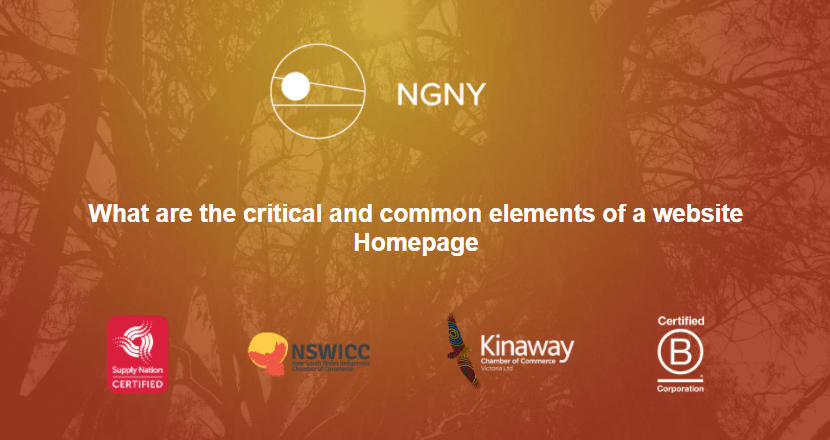
The success of a website does not only rely on it being up and running on the web, but the overall look and feel of your website matters as it translates and communicates with the audience how you can provide answers to their problems. In this article, we will be discussing some of the critical and common elements that need to be highlighted on a website homepage.
1) Headline
Your headline should be catchy and encompassing that the person browsing over your website can have a grasp of what you have to offer within three seconds. You may also opt for intriguing tag lines but make sure you don’t make it too cryptic because most of the browsers have limited attention span and perhaps you would lose your chances in getting that much-awaited conversion. The choice of words also matters. Keep it mind that, the shorter, the better.
2) Sub-headline
This supplements the headline by offering a brief description of what you do or what you offer. You can do this by focusing on the fonts used and the play of words. Make sure to anchor it on the main features of your product or service. To optimize your headlines and text for mobile, use larger fonts to give visitors a better experience.
3) Primary Calls-to-Action
Your homepage is the starting point of letting customers buy from you. What better way to do that than incorporating primary Calls To Action to compel visitors to dig deeper into your website and move them further down the funnel. Include two to three calls-to-action above the fold that direct people to different stages of the buying cycle and place them in spots that are easy to find.
These CTAs should be visually striking, ideally in a color that contrasts from the color scheme of your homepage, while still fitting in with the overall design. Keep the copy brief — no more than five words — and action-oriented, so it compels visitors to click whatever you’re offering. Examples of CTA copy are “Sign up,” “Make an appointment,” or “Try it for free.”
4) Imagery
Since most people are visual learners, it is helpful to choose appropriate images to incorporate in your content. It also pays to invest in an official photography of your brand’s site especially when you are selling products. You may also use short videos for your company profile and other content.
To optimize your images for mobile users, use high-quality images that have a reduced file size. You don’t want website visitors to rant about how pixelated and low quality your website images are.
5) Purpose
Your why must be reflected in the website. You may incorporate 2-3 sentences of why you’re doing this aligning such a statement with your organization’s mission statement. Do not underestimate this component as this will be the deal breaker for most prospects to consider buying for you and perhaps for them to be converted as loyal customers. Keep the copy lightweight and easy to read, and speak the language of your customers. Make it visually appealing and easily understandable.
6) Social Proof
Not all who visit your website are sure buyers. A brand, especially if it’s new, needs to have success stories and one way to achieve that is through publishing social proof. Social proof is a powerful indicator of trust. It speaks a lot of your authenticity as a brand because they hear testimonials and impressions from other users. You may include just a few of your best (short) quotes on the homepage, and link to case studies if applicable.
7) Navigation
The goal here is to create a user-friendly, highly-intuitive interface navigation, one that allows users to freely navigate the website and access information with ease and convenience. The navigation menu contains tabs of headings for the main parts of the websites. Make them visibly pleasing and organize links appropriately in a hierarchical structure.To ensure the best user experience for your website, make sure to test it with the very same team who helped you design it.
8) Content Offer
A compelling content is the lifeblood of a website. To help your website generate more leads, you might want to utilize ebooks, guidebooks, newsletters and publish them on your website. Users who might be interested may opt to download to get to know about your products and services.
9) Secondary Calls-to-Action
Secondary CTAs are a more subtle approach to marketing intended for website visitors who are not yet convinced in byung at that moment but instead potential customers in the future. Incorporating secondary CTAs are helpful because they may opt to subscribe to your monthly newsletters and when the time comes, they will visit your site and consummate the transaction. These secondary CTAs target three different categories: retailers, virtual goods, and financial which appeal to three different buyer personas.
10) Features
Your key features are the go-to of your visitors for them to gain a deeper understanding of your products and services. Remember to keep the copy brief and concise so as not to bore your readers.




